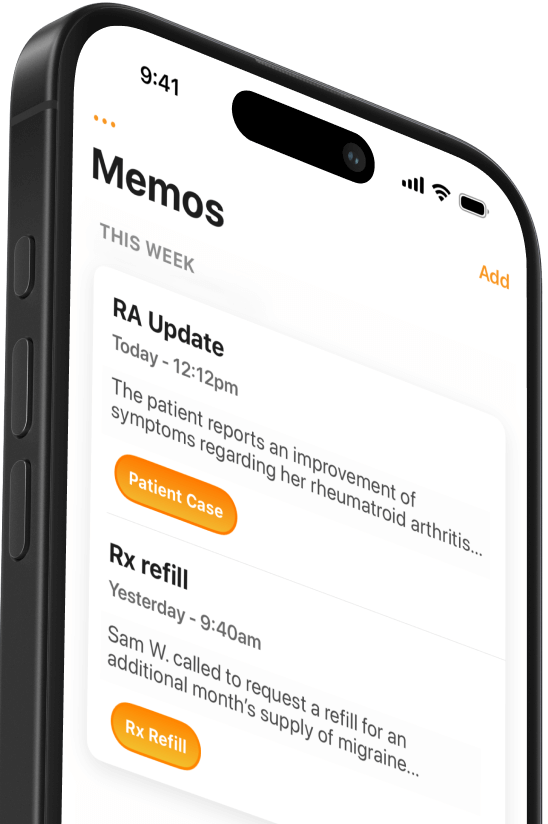Telehealth during COVID-19: How to choose a platform
The coronavirus pandemic has made virtual care essential. As a physician new to telehealth, choose a platform based on your patients' needs and technical abilities.


Popular articles
The coronavirus pandemic has made virtual care more important than ever. But as a physician new to video conferencing, how should you choose a telehealth platform during COVID-19?
Let’s look at the recent changes to telehealth regulation and reimbursement that you need to know about. Then we will cover how to choose a video conferencing service for telehealth during COVID-19.
CMS expanded telehealth access
The Centers for Medicare & Medicaid Services (CMS) has loosened regulations for telehealth in response to COVID-19. Physicians anywhere can now deliver virtual services to Medicare beneficiaries at home.
Prior to this waiver Medicare would only pay for telehealth when the patient was in a designated rural area. CMS has temporarily authorized physicians to provide three main types of virtual services: Medicare telehealth visits, virtual check-ins, and e-visits.
To learn more about coverage and reimbursement for virtual services, see this CMS Fact Sheet.

HIPAA allows everyday video conferencing platforms
While CMS has made telehealth accessible to many more people, there are also more software options.
As of March 17, 2020 regulators adjusted the Health Insurance Portability and Accountability Act (HIPAA) to allow providers to treat patients via everyday video conferencing platforms like Skype.
The HHS Office for Civil Rights says they will “exercise enforcement discretion and waive penalties for HIPAA violations against health care providers that serve patients in good faith through everyday communication technologies, such as FaceTime or Skype, during the COVID-19 nationwide public health emergency.”
It’s worth noting that many states have separate laws protecting health information. But it seems that for the time being physicians can treat patients using common video conferencing platforms not designed specifically for medicine.
How to choose a telehealth platform
If you’re new to telehealth and planning to see patients virtually, the simplest solution is to start with what you already know. Familiar with Skype? Use Skype. Familiar with WhatsApp? Use WhatsApp.
But if you have even a little time to implement a telehealth solution, it’s worth looking at HIPAA-compliant services. The challenge is there are literally hundreds to choose from.
Here are some helpful questions to point you in the right direction.
Questions to guide your search for the right telehealth software
- What do your users need? Are your patients already using other software they would be familiar with? Will the new software be too complicated or too much of a change?
- Do your patients have good internet access? If internet quality is a concern, you may want to invest in a more advanced platform. Costlier telehealth software can provide superior video when internet is spotty.
- Is there a specific software for your specialty? Some video conferencing solutions focus on specific specialties. These solutions may save you time by including features and functionality that’s well suited to your needs.
- What are your colleagues using? You don’t want to spend months testing different telehealth platforms. A great way to pick a platform is to ask trusted colleagues in your speciality area what they are using that works.
- Will they sign a BAA? Not all telehealth providers are willing to sign a Business Associate Agreement, so make sure to ask before agreeing to work with them.
- Does the software integrate with your workflow? Some telehealth software will automatically integrate with your existing EHR or billing services.
- What’s the cost? Some telehealth services offer a free trial or have free versions for individuals or small practices. Many telehealth services are also offering free access to organizations responding to COVID-19.
Popular telehealth software options
We don’t endorse a specific product. But here are some of the top-rated telehealth brands that appear on most “best of” lists:
Capterra has a full list of telehealth software where you can compare product reviews and features.
The bottom line is this: don’t let deciding on a platform delay serving patients and continuing to operate your practice safely. HHS says they won’t penalize physicians using everyday apps like Skype for telehealth. So don't let researching software options prevent you from getting started.
First-stop resources for Telehealth during COVID-19
Here are the most important resources for physicians using telehealth to treat patients during COVID-19:
General Provider Telehealth and Telemedicine Tool Kit - The official CMS guide to telehealth during the pandemic. Learn more about the 1135 Waiver, state statue guidance, and basics on setting up telehealth.
The Telehealth Initiative - A program to help physicians redesign their practice to successfully provide telehealth service to their patients. The Physicians Foundation and AMA, in collaboration with partner organizations, launched this initiative early in response to COVID-19.
Using Telehealth to Care for Patients During the COVID-19 Pandemic - Resources compiled by the AAFP to answer your questions: How do I quickly implement telemedicine in my practice? How do I get reimbursed?
State Telehealth and Licensure Expansion COVID-19 Dashboard - The Alliance for Connected Care has compiled a resource detailing state-by-state expansion of telehealth and licensing waivers during the COVID-19 pandemic.
Related Articles


We Get Doctors Home on Time.
Contact us
We proudly offer enterprise-ready solutions for large clinical practices and hospitals.
Whether you’re looking for a universal dictation platform or want to improve the documentation efficiency of your workforce, we’re here to help.





